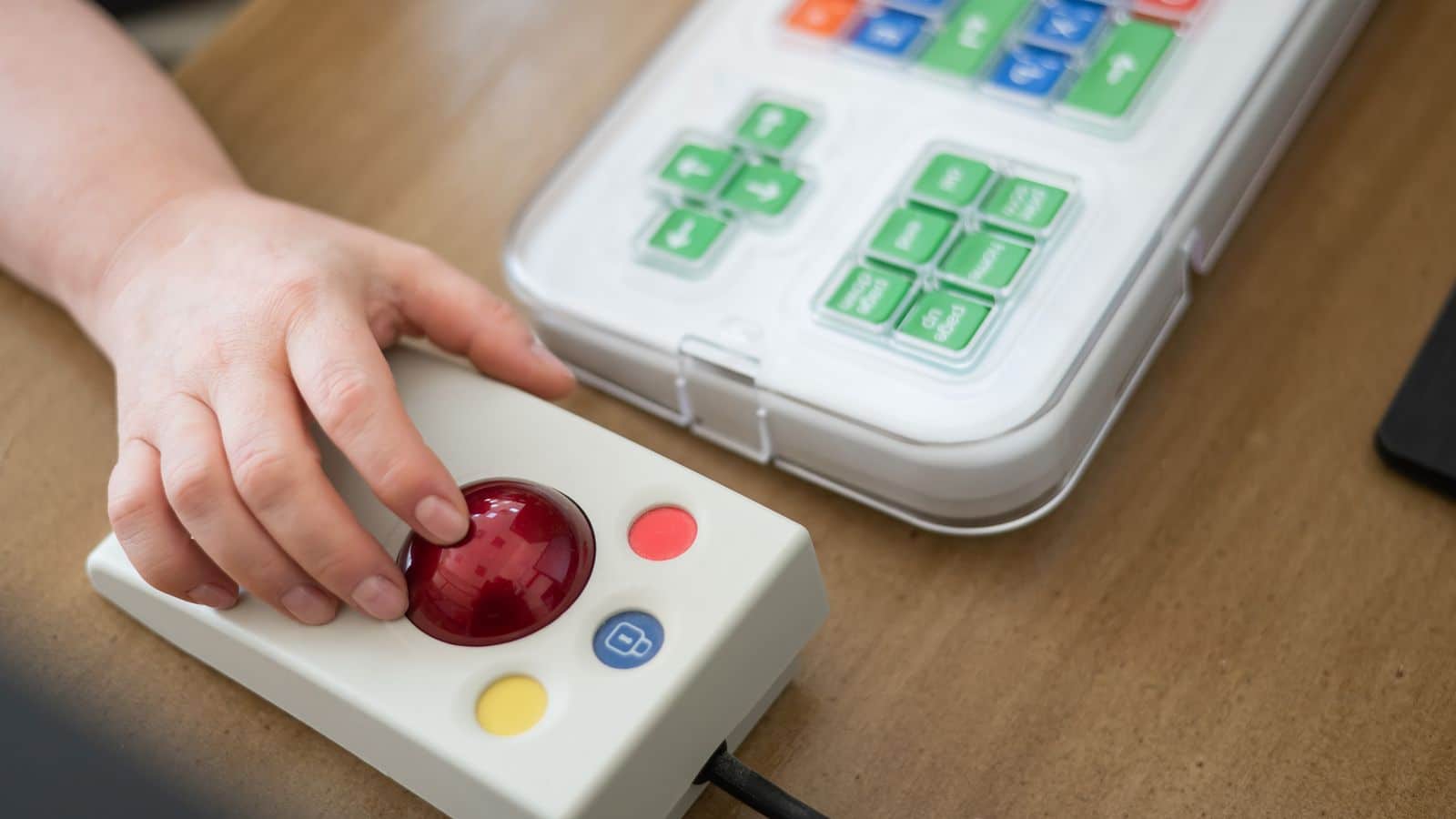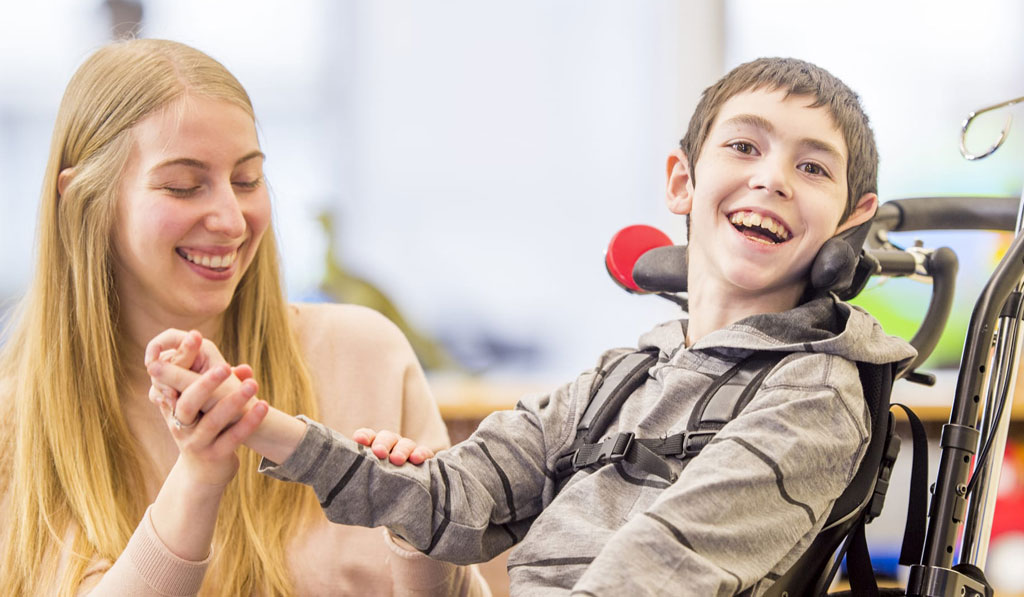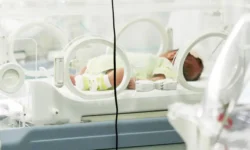Learn about the different surgical treatment options available to decrease pain and increase mobility for people with spastic cerebral palsy
If your child has recently been diagnosed with spastic cerebral palsy, you’re likely navigating a whirlwind of emotions and questions about what the future holds.
Fortunately, there have been significant advances in medical treatments in recent years, including surgical options, that can help people with spastic cerebral palsy improve their mobility and live a more fulfilling life.
What is spastic cerebral palsy?
Spastic cerebral palsy, the most common type of cerebral palsy (CP), is a neurological disorder primarily characterized by increased muscle tone, leading to stiffness and spasticity in the muscles.
It’s caused by brain damage that occurs before, during or shortly after birth due to various factors, including reduced oxygen or blood flow to the brain from fetal distress, infections in the mother during pregnancy, premature birth, brain hemorrhages in the baby, or severe jaundice after birth, all of which can result from medical mistakes.
Spastic cerebral palsy is divided into different types according to the area of the body affected and may include:
- Spastic diplegia. Predominantly affects the legs more than the arms, leading to tightness and stiffness in the leg muscles, often causing a “scissor gait” walking pattern.
- Spastic hemiplegia. Involves only one side of the body (either left or right), affecting the arm and leg on that side. The arm is usually more affected than the leg.
- Spastic quadriplegia. The most severe form, affecting all 4 limbs (both arms and legs), as well as the torso and sometimes the face. This type can also be associated with more significant intellectual and developmental challenges.
Each type varies in severity and the specific challenges it presents, influencing the approach to treatment and care, which can include surgery.
Is there surgery for spasticity?
Yes, there are surgical options for treating spasticity, particularly in cases where it significantly affects mobility and quality of life.
This surgical treatment is often used in conjunction with other medical treatments and therapies, including physical and occupational therapy, assistive devices (like braces), and certain medications, with the goal of decreasing pain, increasing mobility and improving the person’s overall quality of life.
Learn how adaptive equipment and assistive technology can improve the lives of kids with cerebral palsy and other birth injuries.
What is the most common surgery for cerebral palsy?
The most common surgery for cerebral palsy, particularly for addressing issues related to spasticity, is orthopedic surgery, a branch of surgery concerned with conditions involving the musculoskeletal system.
These surgeries are often focused on correcting muscle and tendon imbalances that are common in individuals with cerebral palsy. The specific types of orthopedic surgeries frequently performed include:
- Tendon lengthening. This helps alleviate muscle tightness and improve range of motion by lengthening muscles that are shortened due to spasticity.
- Tendon release. Similar to tendon lengthening, this surgery involves cutting tight tendons to reduce spasticity and improve mobility.
- Tendon transfer. This involves reattaching a tendon from a spastic muscle to a different location to improve function and balance muscle forces.
- Osteotomy. This involves reshaping and realigning bones to correct deformities and improve joint alignment and mobility, particularly in the hips and legs.
- Spinal fusion. This is used in cases where there is severe spinal curvature (scoliosis) that cannot be managed with bracing. Spinal fusion stabilizes and straightens the spine by joining 2 or more vertebrae.
What other surgeries can help spastic cerebral palsy?
In addition to orthopedic surgery, other surgical options that may help decrease pain and increase mobility in people with spastic cerebral palsy include:
- Selective dorsal rhizotomy (SDR). This neurosurgical procedure involves identifying and cutting selected nerve roots in the spinal cord that contribute to spasticity. By selectively severing these nerve roots, SDR can significantly reduce muscle stiffness and improve mobility, particularly in patients with spastic diplegia cerebral palsy. It’s a permanent procedure and is usually followed by extensive physical therapy to maximize its benefits.
- Intrathecal baclofen pump. This treatment involves the implantation of a pump that delivers the muscle relaxant baclofen directly into the spinal fluid. The baclofen pump is particularly beneficial for individuals with severe spasticity who have not responded well to oral medications or other treatments. The dosage can be adjusted as needed, and the pump provides a continuous supply of medication, which can significantly reduce spasticity without the side effects often associated with higher doses of oral baclofen.
Surgeries are considered advanced treatments for spasticity and are typically used when more conservative measures (like oral medications, physical therapy, and Botox injections) have not provided adequate relief. These surgeries require a thorough patient evaluation and a commitment to post-operative rehabilitation to achieve the best outcomes.
Is there surgery for spasticity in legs?
Yes, all of the surgeries mentioned above, including tendon surgeries, osteotomies, selective dorsal rhizotomies, and implanted pain pumps, are available and can be beneficial for people suffering from pain and mobility issues in their legs due to spastic cerebral palsy.
The benefits of any specific surgery will vary based on individual circumstances, including the severity of symptoms, the person’s overall health, and their response to other types of treatment and therapies.
Can cerebral palsy be fixed with surgery?
While cerebral palsy cannot be “fixed” or cured with surgery, as it’s a neurological condition caused by brain damage that is permanent, surgery can help manage some of the symptoms associated with cerebral palsy, particularly those related to muscle spasticity and skeletal deformities.
These surgeries can improve mobility, reduce pain, and enhance the quality of life for individuals with cerebral palsy but are typically only one part of a broader management plan that includes physical therapy, medications, and other interventions with the goal of maximizing the individual’s functional abilities and independence.
Learn the truth about these top cerebral palsy myths.
What age can you have cerebral palsy surgery?
The age at which an individual can undergo surgery for cerebral palsy varies depending on the type of surgery and the specific needs of the patient.
There is no one-size-fits-all answer, as the decision is highly individualized and based on various factors, including the severity of symptoms, overall health, and developmental stage of the child, but below are some general guidelines:
- Orthopedic surgeries. Many orthopedic surgeries, such as tendon lengthening or tendon release, are often performed in early childhood. This timing is chosen to coincide with key developmental stages and to prevent or correct deformities as the child grows. For surgeries related to growth and skeletal maturity, such as those addressing scoliosis, the timing might be delayed until adolescence.
- Selective dorsal rhizotomy (SDR). This procedure is typically performed on children between the ages of 3 and 10, as it has been found most effective during this age range. However, it can be done in older children and adults in some cases.
- Intrathecal baclofen pump. The decision to implant a baclofen pump is usually made for children who are school-aged or older, as it requires careful management and the ability to tolerate the surgery and device.
Each case is unique, and the timing of surgery is determined by a multidisciplinary team of health care professionals, including neurologists, orthopedic surgeons, and physical therapists, in consultation with the patient and their family. The overall aim is to choose a time that maximizes the benefits of surgery while supporting the individual’s growth and development.
What is the newest treatment for spasticity?
Fortunately, new treatments for spasticity are emerging every year. One such therapy called extracorporeal shock wave therapy (ESWT), which involves delivering acoustic energy similar to what one might experience at a concert, has shown promise in treating spasticity in children with cerebral palsy, according to a recent systematic review of 49 studies published in the European Journal of Physical and Rehabilitation Medicine.
This therapy, initially used for kidney stones, has been observed to decrease spasticity and improve range of motion and walking dynamics in cerebral palsy patients without any significant side effects.
The analysis, which included studies with a total of 104 participants, mostly children, found that ESWT led to significant improvements without serious side effects. However, the researchers noted that the data is currently limited due to small sample sizes, short follow-up periods, and methodological variations across studies, so more research will be needed to fully understand the potential benefits and risks of ESWT for kids with CP.
Are you concerned your child’s cerebral palsy was caused by a doctor’s mistake?
If you suspect that your child’s cerebral palsy was caused by a medical mistake, it’s crucial to explore your legal options for financial recovery. At Brown Trial Firm, experienced birth injury attorney Laura Brown specializes in these cases and understands the complexities involved in cerebral palsy claims.
Seeking appropriate compensation is not just about justice; it’s about ensuring you have the resources needed to support your child’s treatment and care, including surgeries and therapies that can significantly enhance their quality of life.
Reach out to Brown Trial Firm today to schedule a free consultation to learn more about your child’s legal rights.
- Cerebral Palsy
- Caput Succedaneum and Cephalohematoma
- Neonatal Intracranial Hemorrhage (Childbirth Brain Bleeds)
- Hydrocephalus (Extra Fluid in the Brain Cavity)
- Cervical Dystonia
- Hemiplegia (Brain or Spinal Cord Injury)
- Hemorrhagic Stroke
- Neonatal Stroke
- HIE
- Periventricular Leukomalacia (PVL) Brain Injury
- Infant Seizures
- Spastic Diplegia (Spasticity in the Legs)
- Top Risks for Birth Injuries
- Fetal Alcohol Syndrome
- Facial Paralysis
- Spinal Cord Injuries
- Bell’s Palsy
- Brachial Plexus Nerves & Erb’s Palsy
- Klumpke’s Palsy
- G-Tubes for Newborns
- Medical Errors
- Cesarean Section & Birth Injury
- Negligence in Brain Cooling Treatment
- Craniosacral Therapy
- Occupational Therapy
- Speech Therapy
- Transition From Pediatric to Adult Healthcare
- Surgical Options for Spastic Cerebral Palsy
- Fetal Intolerance to Labor
- Jaundice (Kernicterus)
- Breech Position
- Placental Complications
- Umbilical Cord Problems
- Uterine Rupture
- Cervical Incompetence (Insufficiency)
- Blighted Ovum
- Necrotizing Enterocolitis (NEC) - Intestinal Inflammation
- Cephalopelvic Disproportion
- Meconium Aspiration Syndrome
- Amniotic Fluid Embolism
- Birth Injury from Premature Delivery
- Developmental Delays
- Abnormal Cord Insertion
- Infections at Birth
- Chorioamnionitis Bacterial Infection
- Premature birth
- Oxygen Deprivation
- Listeria
- Birth-Acquired Herpes
- Placenta Previa
- Placental Abruption
- Mismanaged Fetal Malposition
- Rapid Labor
- Obesity Related Birth Injuries
- Intrauterine Growth Restriction
- Blood Clots During Pregnancy
- Ectopic Pregnancy Misdiagnosis
- Myths & Facts About Birth Injuries
- Bacterial Vaginosis
- Gestational Diabetes
- Maternal Mortality Risk
- Oligohydramnios (Low Amniotic Fluid)
- Infections During Pregnancy
- Excessive Bleeding During Pregnancy
- Congenital Syphilis




